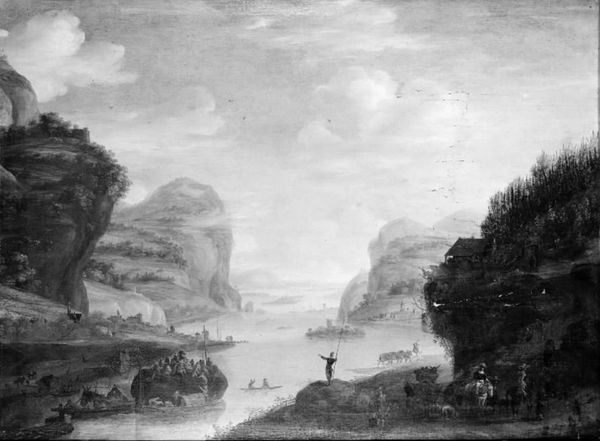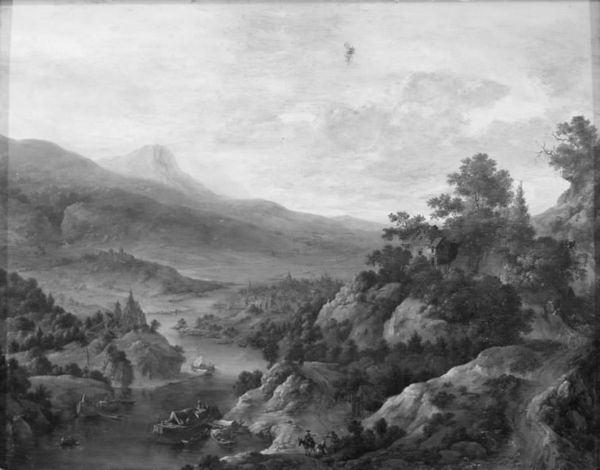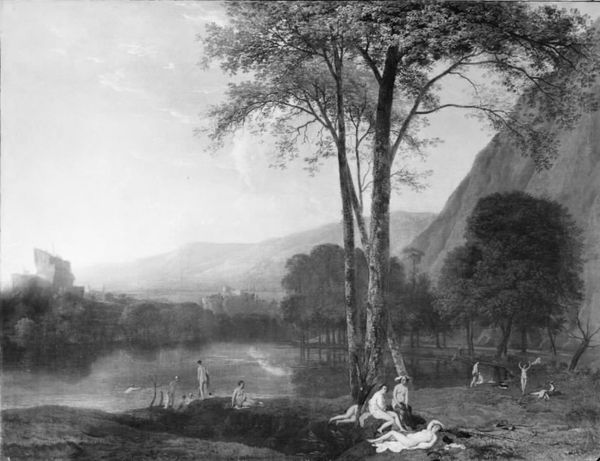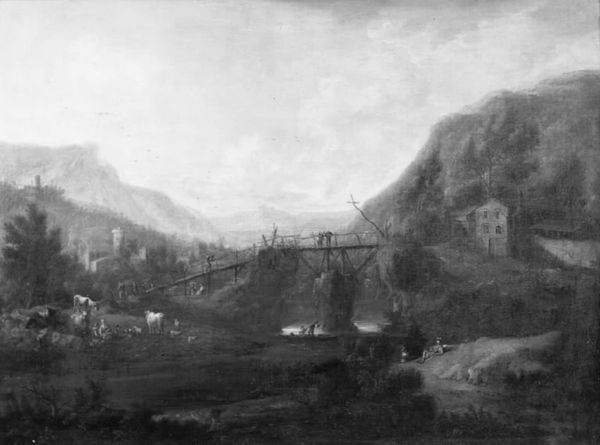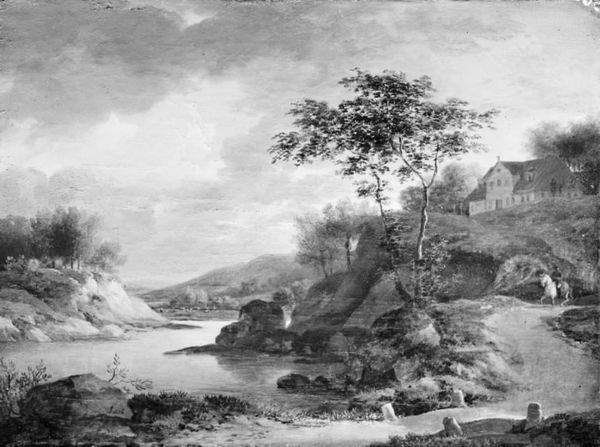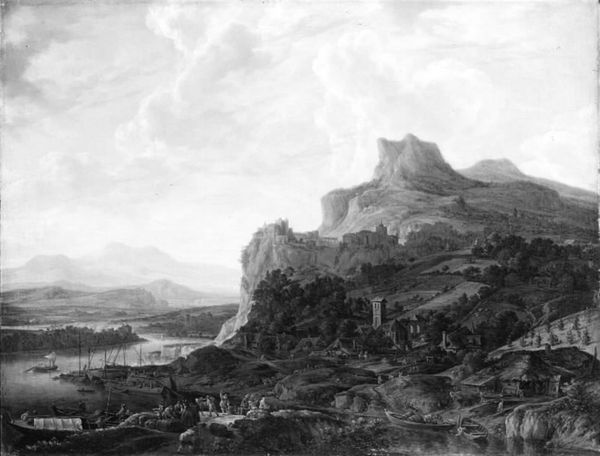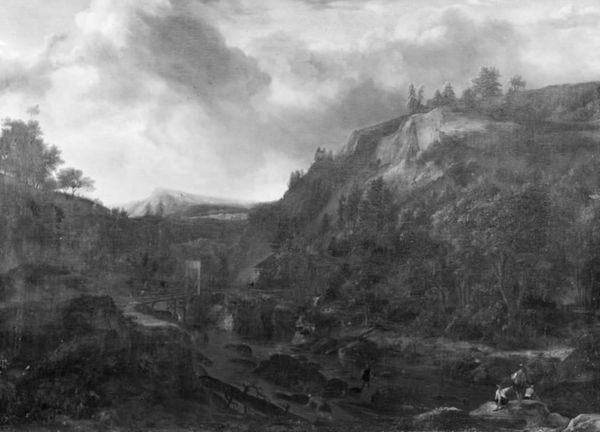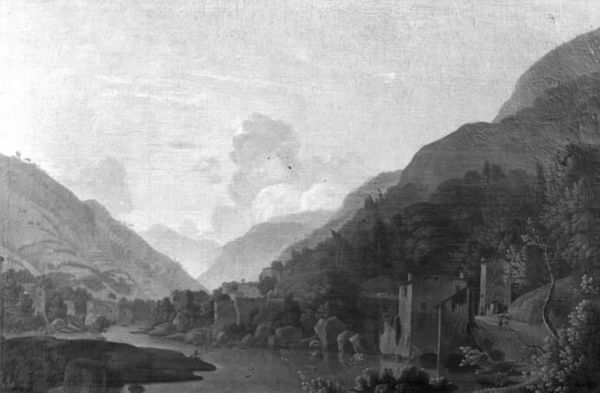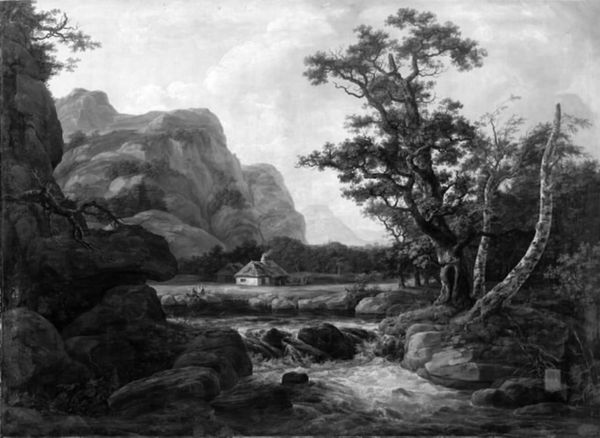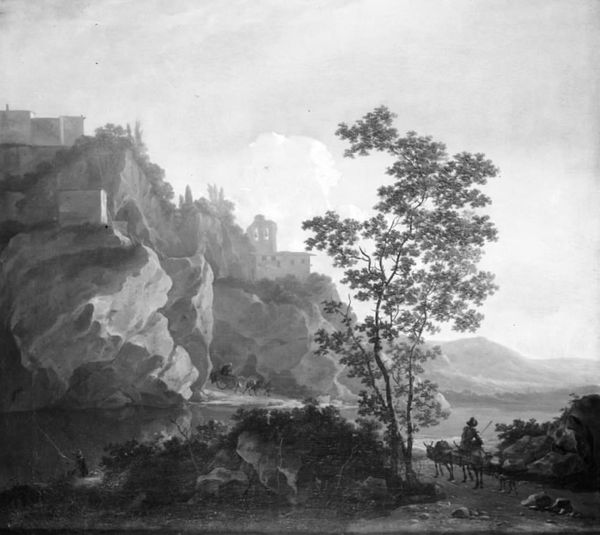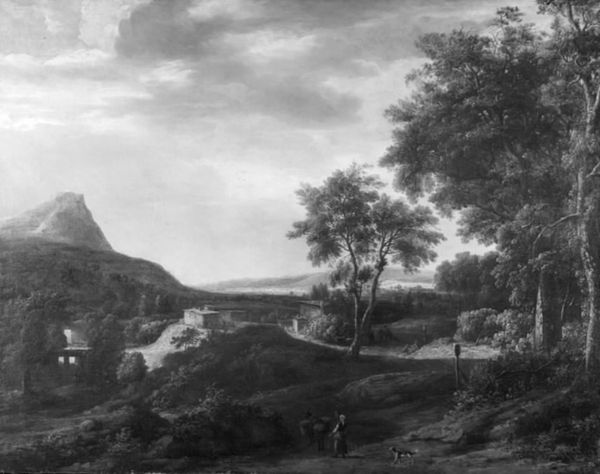
painting, oil-paint
#
baroque
#
painting
#
oil-paint
#
landscape
#
genre-painting
#
monochrome
#
monochrome
Dimensions: 22 cm (height) x 29 cm (width) (Netto)
Curator: This is Herman Saftleven’s “Rhine Landscape by Bingen,” an oil painting likely executed sometime between 1624 and 1685. Editor: It feels almost monochrome. The muted palette creates a somber, serene, even subdued mood. I see monumental rocks towering over what appears to be the Rhine, with tiny figures dotting the riverbank and boats gliding on the water. Curator: Saftleven, typical of his time, embraced the genre of landscape painting. He captured not just topography, but also scenes of daily life alongside the river. The detail he puts into rendering human figures gives us insights into everyday interactions. This wasn’t only about a picturesque view. It documents the hustle and bustle, the local economy, and transportation systems. Editor: And who exactly benefitted from that economic system, and at whose expense was this serene landscape produced? It's important to recognize how romanticized portrayals can obscure power dynamics. Who has access to this "picturesque view" historically, and who's doing the work in the scene itself? We can't forget to question narratives that glorify landscapes without acknowledging these complex histories. Curator: Absolutely, though considering it in the context of Dutch art, we recognize an idealized and optimistic vision. Dutch landscape painting arose as an affirmation of national identity. This, of course, occurred in the Golden Age of Dutch prosperity during the seventeenth century when landscape art reflected a source of national pride. Editor: Right. Dutch identity, and therefore, which people the artwork includes and excludes. Looking again, I see all this intense detail that is almost overwhelming – but, zooming out, the picture also romanticizes something simple like traveling to the market. We have to remain attentive and critical about its purpose. It’s important to understand art as part of this discourse. Curator: Very true. Ultimately, works such as this one give us more than just insight into what landscapes of the era looked like. It offers, from our contemporary vantage, insights into cultural and economic activity, and ideological perspectives. Editor: This picture’s strength is certainly sparking such critical engagement. Examining it today reveals much about the social lens through which Saftleven saw the world.
Comments
No comments
Be the first to comment and join the conversation on the ultimate creative platform.
